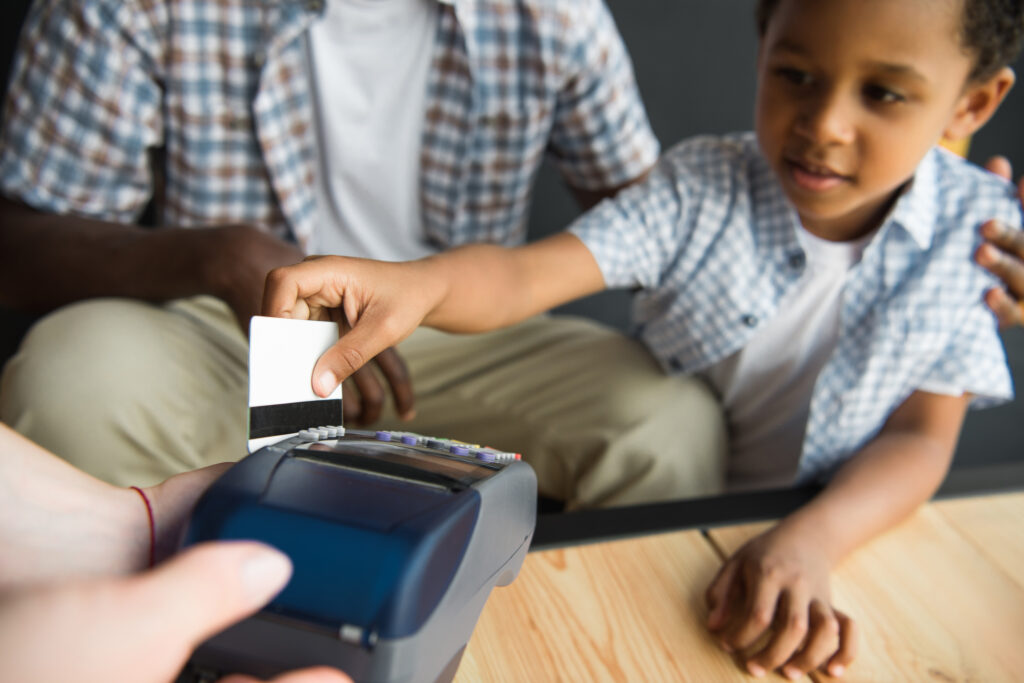Teaching kids about managing money responsibly is a valuable life lesson. One tool that can help with this is a debit card designed especially for them. These cards are a way for kids to learn about spending, saving, and budgeting, with full parental control and visibility. Here’s what you should know about a debit card for kids, and how to decide if it’s the right thing for your child.
The Benefits of debit cards for kids
1. Financial education
Debit cards for kids provide an opportunity for hands-on financial education. They allow parents to teach their children about budgeting, saving, and responsible spending.
2. Security
Debit cards are generally safer than giving children cash. If the card is lost or stolen, the funds are protected by the bank’s fraud prevention measures.
3. Control
You can monitor and control their child’s spending through the associated app or online account. Some cards allow parents to set spending limits and receive notifications for each transaction.
4. Convenience
Debit cards are widely accepted, making it easy for kids to make purchases in-person or online.
How Debit Cards for Kids Work
1. Parental control
With most companies, you’ll have primary control over your child’s debit card. You can apply for the card, link it to your own bank account, and see all transactions.
2. Age requirements
Most debit card programs for kids have minimum age requirements. They vary by provider but generally start at around 6.
3. Funding
You can load money onto the debit card from your own bank account through a linked account or via transfers.
4. Spending limits
You can set spending limits on your child’s card. Some cards allow for daily or weekly limits, which can be a great way to help kids learn to budget their money.
5. Transaction monitoring
You can track your child’s spending through an associated mobile app or online account. You receive notifications for each transaction, making it easy to keep an eye on where the money is going.
Things to think about
1. Fees
Be aware of any fees associated with the debit card program. Some providers charge monthly fees or fees for specific services like ATM withdrawals. Look for a card with minimal fees or fee waivers.
2. Security measures
Ensure the debit card program has robust security measures in place to protect your child’s account and funds. This includes encryption, fraud monitoring, and the ability to lock the card if it’s lost or stolen.
3. Educational resources
Some debit card programs offer educational resources for parents and children. Look for programs that provide financial literacy tools and materials to help kids learn about money.
4. Reload options
Check the available options for loading money onto the card. Some cards allow for direct transfers from your bank account, while others might require visiting a physical location or using specific methods.
5. Age-appropriate features
Consider the age of your child and their level of financial responsibility. Some debit cards for kids are designed for younger children and offer more restricted spending, while others are better suited for teenagers who may need more independence.
6. Privacy
Review the provider’s privacy policy to understand how your child’s personal and financial information will be used and protected.
Examples of debit cards for kids
1. Greenlight
Greenlight is a popular debit card for kids that offers parental controls, spending limits, and educational tools. It allows parents to allocate money into different categories like spending, saving, and giving.
2. FamZoo
FamZoo offers a family-friendly financial app and prepaid debit card for kids. It provides a way for parents to teach kids about money management through a virtual family bank.
3. BusyKid
BusyKid combines chores, allowance, and a prepaid debit card. Parents can assign chores to their children, and once completed, the kids can earn money that is loaded onto their BusyKid debit card.
4. Current
Current offers a debit card designed for teenagers. It provides real-world banking experience while maintaining parental oversight and control.
The bottom line: debit cards for kids
Debit cards for kids can be valuable tools for teaching financial responsibility. They offer a controlled and supervised way for children to learn about money management, budgeting, and saving. When choosing a debit card program for your child, consider factors like fees, security, educational resources, and age-appropriate features. By introducing your child to responsible money management early on, you can set them on a path to financial success in the future.









